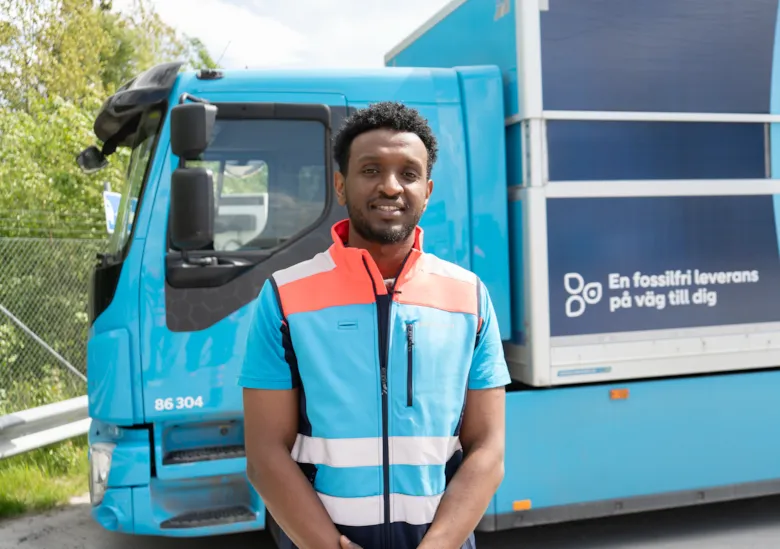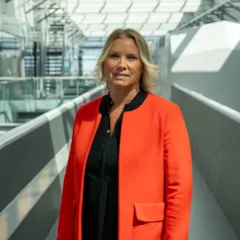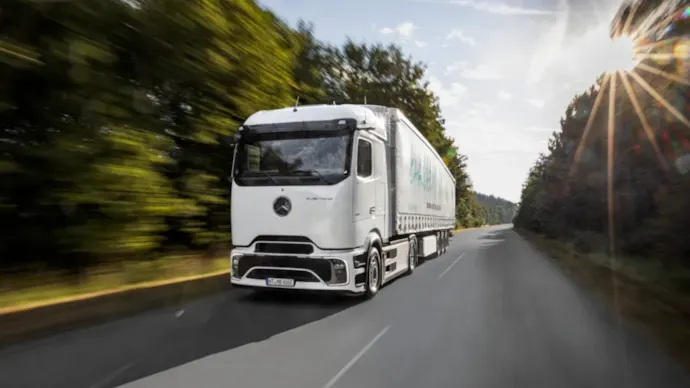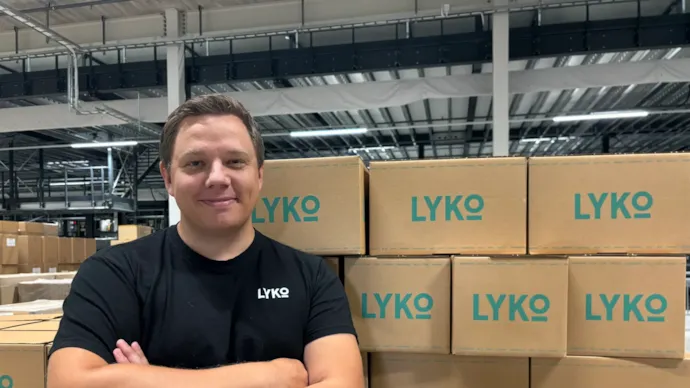Heavy transport on the road to fossil freedom

Heavy transport is a major climate challenge in a sector responsible for a considerable share of global emissions. For PostNord, tackling it is central to the company’s climate strategy. Doing so demands changes in technology, infrastructure, operations, and partnerships. The long-term goal is clear: net-zero emissions by 2040.
Where emissions are highest, change is most needed
“When it comes to heavy transport, it’s incredibly important that we, together with the rest of the industry, make the shift now,” says Liv Najjar, Head of Category and Fleet Managementat PostNord Sweden.


Road transport, and especially heavy and long-distance transport, makes up a significant share of PostNord’s total carbon footprint. It is also one of the company’s main opportunities for reducing emissions.
From diesel to electric in daily operations
Driver Yonathan Tecile from PostNord’s terminal in Veddesta, Sweden is already behind the wheel of an electric heavy truck.
“We’re already up and running. It feels and is really motivating,” he says.
“We don’t want to be the problem; we want to be the solution.”
In Sweden, PostNord’s electric truck fleet has doubled in a short time. At the same time, charging infrastructure and new operational routines are being rolled out.
“It’s a major undertaking that requires new processes, equipment, and resources at our terminals,” says Nima Ghaviha, Senior Green Technology Lead at PostNord Group.
The implementation of electric trucks also requires a new and adapted production planning. Electric operations demand new route schedules, integrated range margins, and efficient charging infrastructure.
The challenges and why they’re worth solving
Range limitations and restricted grid capacity remain some of the biggest hurdles in electrifying heavy transport in the Nordics.
“You have to plan your charging all the time, especially in the winter when cold weather affects the battery,” says Yonathan.
Electric trucks also cost more to buy, and competition for electricity is rising as other sectors electrify.
For PostNord, this is not just about new trucks but about securing the energy and infrastructure to keep them running and viewing challenges as drivers for innovation, collaboration, and climate leadership.
Pilot projects and future visions
To address grid capacity challenges in winter, PostNord is piloting a latest generation electric long-haul truck in Finland, running over 700 km daily to test performance in tough conditions.


“It’s a way for us to show both internally and externally that long-haul electric transport is possible. What we learn in Finland helps not only us, but also our subcontractors and the entire industry,” says Per Wollin, Green Technology and Climate Lead, PostNord Group.
These efforts are part of the push toward Net Zero 2040.
“In five years, we’ll be fossil-free. In fifteen we’ll have reached net-zero emissions. We need to work closely with manufacturers to cut emissions across the vehicle lifecycle,” says Nima Ghaviha.
Electrification requires collaboration
Scaling up the fleet of electric heavy trucks requires working with manufacturers, authorities, and other stakeholders across the value chain.
“With the rapid pace of technological development, we see great opportunities to continue transforming our truck fleet,” says Liv.
Nima emphasizes that the transition is not only possible but necessary.
“We have a responsibility to take climate leadership, and the results show that it works when we join forces,” he says.
For Yonathan, it’s about pride:
“I hope we’ll be 100 percent fossil-free. It feels good to be part of sustainability at PostNord.”

Sustainability stories
Explore our stories to learn how PostNord is leading the way to sustainable logistics.


